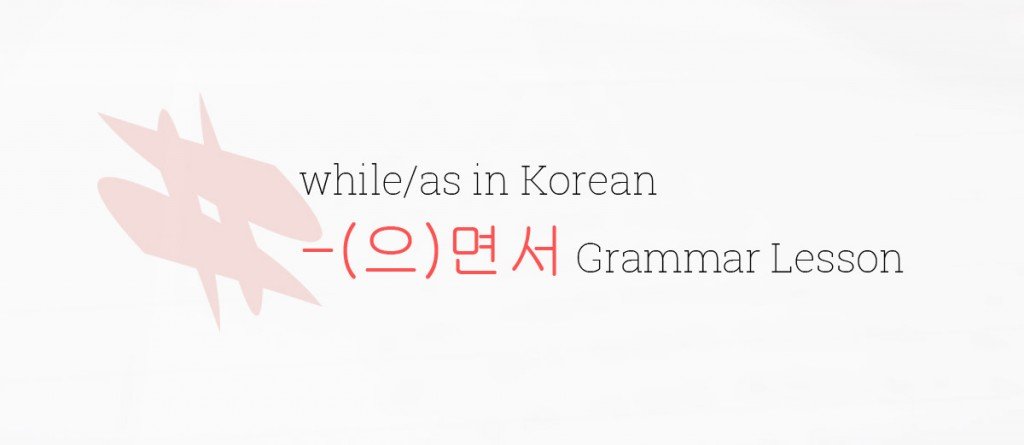– 면서 / 으면서 Grammar Lesson – while/as in Korean

– (으)면서 Grammar Explanation
Are you good at multitasking or doing two things at the same time? If so you, might find this lesson extra useful. In Korean, we can use the -(으)면서 grammar pattern to describe two actions being performed at the same time. It is used by adding (으)면서 to the verb of the first action and then following up with the second action. Translated to English, this pattern means “while.” For example:
밥을 먹으면서 한국어를 공부해요
I eat while I study.
Usage
| VST+으면서 | When the verb stem ends with a consonant |
| VST+면서 | When the verb stem ends with a vowel or ㄹ |
| 하다 | 하면서 |
| 쓰다 | 쓰면서 |
| 듣다* | 들으면서* |
| 먹다 | 먹으면서 |
| 가다 | 가면서 |
| 만들다 | 만들면서 |
| 읽다 | 읽으면서 |
| 보다 | 보면서 |
*듣다 is a ㄷ-irregular verb and conjugates differently than other verbs that ends with a consonant.
Examples
전화를 하면서 TV를 봐요.
= I talk on the phone while watching TV.
음악을 들으면서 운전을 해요.
= I listen to music while driving.
밥을 먹으면서 이야기를 했어요.
= We had a conversation while eating.
춤을 추면서 노래를 불렀어요.
= We sang while dancing.
What about Adjectives (DVST)?
For the most part, this pattern is used with action verbs but you will sometimes see it used with descriptive verbs as well. In such cases, it is used to list complementary properties of something/someone.
Tense markers at the end
For sentences describing events that took place in the past or or will take place in the future, tense markers should be added to the end of the sentence and can not precede this structure.
점심을 먹었으면서 텔레비전을 봤어요. (X)
점심을 먹었으면서 텔레비전을 봐요. (X)
점심을 먹으면서 텔레비전을 봤어요. (O)
= I ate lunch while watching television.
For more advanced learners, note that 도 of (으)면서도 (meaning ‘although’) can be omitted without any change in meaning. So if at any time tense markers precede this grammar, keep in mind that it means “although” and is not the same as what we’ve learned in this lesson. Stay tuned for our lesson on (으)면서도 for more information about this.
Subjects must be the same
With this grammar structure, the subjects of the preceding clause and the following clause must be the same. If the subjects are different, you should use the structure -는 동안.
누나는 노래를 부르면서 형은 요리를 했다. (X)
누나는 노래를 부르는 동안 형은 요리를 했다. (O)
= My sister sang while my brother cooked.
Similar structures
Similar structures, such as (으)며 and (으)면서도 will be covered in upcoming lessons, so stay tuned!
Please like or share if you found this lesson useful. If you have any questions or something else on your mind, make sure to let us know by leaving a comment and we will do our best to help you out!
By: Kimchi Cloud




